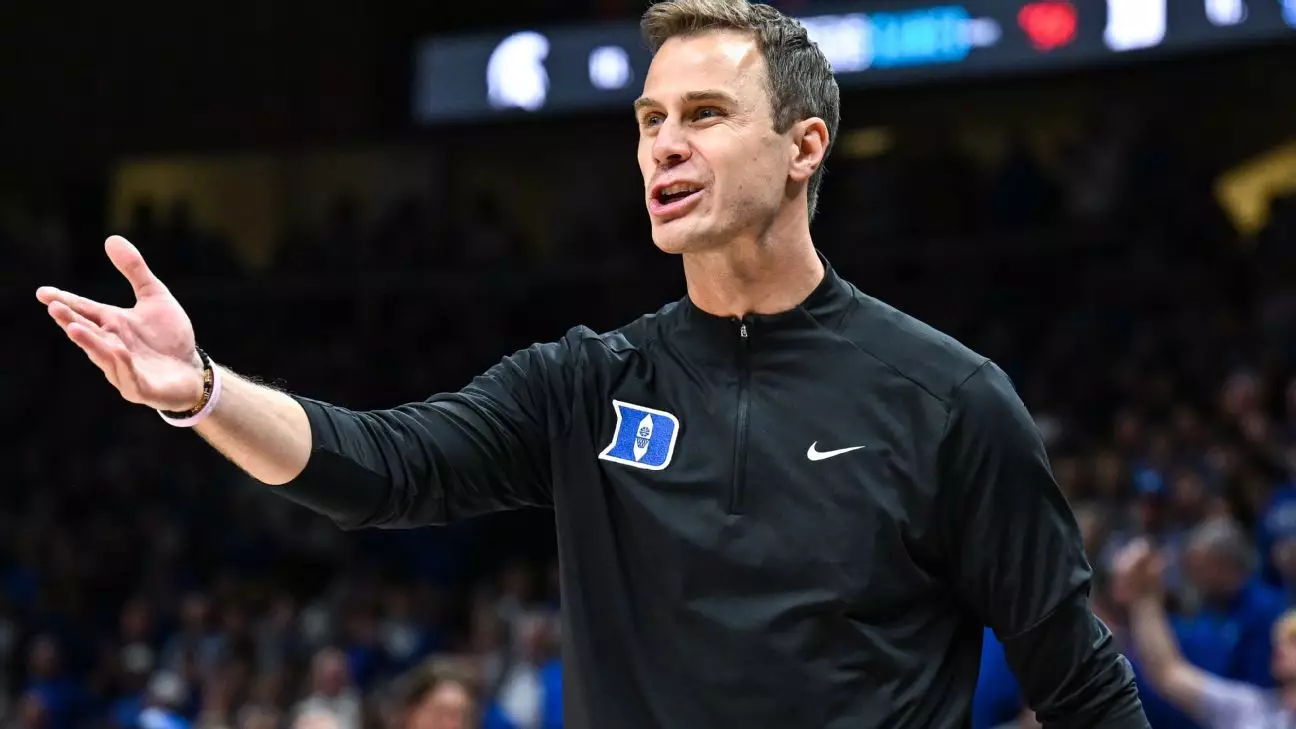In recent seasons, the landscape of collegiate basketball has transformed dramatically, especially for powerhouse programs like Duke University. As the stakes get higher, so does the pressure on young athletes. A recent incident involving Duke’s freshmen has sparked a broader discussion about player health, management, and the implications of their cramping issues during crucial games.
The situation involving Duke’s freshman center Khaman Maluach during a closely contested game against Kentucky reveals alarming trends. His struggle with cramping that limited him to a mere 10 minutes in the second half raises questions about physical readiness and overall player management. Cramping issues in athletes, especially younger players, can often point to deficits in hydration, nutrition, or even conditioning. The recurrence of such incidents not only affects the individual player’s performance but also jeopardizes the team’s success when crucial players cannot contribute effectively.
Duke head coach Jon Scheyer expressed genuine concern about the ongoing issue, emphasizing the significance of developing young bodies in high-pressure situations. “We have young bodies, and I think that’s part of it,” Scheyer noted, indicating that the rigorous demands placed on these athletes need reevaluation. The emphasis on players being in peak physical condition must take into account the unique challenges faced by freshmen adjusting to the demands of collegiate basketball.
The ramifications of injuries extend beyond just the individual player’s performance. When crucial team members, such as Maluach and reserve guard Sion James, are sidelined or constrained by health issues, the entire team’s dynamics are altered. James suffered a shoulder injury, following a hard hit, causing him to exit the game abruptly. The impact of such injuries creates a domino effect, forcing coaches to rethink strategies and adjust for missing contributions from key players.
This was evident when Maluach’s exit from the game not only affected his own statistics—10 points, 7 rebounds, and 2 blocks—but also hindered Duke’s overall performance, contributing to their narrow 77-72 loss to Kentucky. When teams lose valuable playing time from their stars, they risk falling short of their performance goals, ultimately impacting their standing in the competitive landscape of college basketball.
Scheyer’s determination to assist players like Maluach and Cooper Flagg reflects a deeper realization of the challenges inherent in molding young talent. “I can promise you I’m going to be meeting [with the team’s training staff],” he declared, highlighting his commitment to rectifying the recurring issue. But addressing cramping and injury concerns is not merely about short-term fixes. The long-term development of athletes hinges on understanding the physical, mental, and emotional stresses they experience throughout their seasons.
As college basketball continues to evolve, there must be a shift towards creating a supportive ecosystem for athletes. This includes providing ample resources for nutrition, hydration, and mental health support. Coaches must collaborate with training staff closely, ensuring comprehensive strategies are in place to keep players healthy and at their best throughout the long season.
As the Blue Devils move forward, it becomes increasingly crucial to prioritize comprehensive health management strategies that encompass all aspects of playing the game. Education on proper hydration and nutrition should be ingrained into the daily routine of college athletes. History shows that taking a proactive approach can lead to fewer instances of injury and cramping, thus enhancing overall individual and team performance.
Duke basketball stands at a crossroads, wherein the wellbeing of young athletes must come first. By fostering an environment where health is prioritized and systematically incorporated into every facet—be it training regimens, game day preparations, or recovery protocols—the program can build a solid foundation for sustained success. Ultimately, this proactive approach not only enhances players’ careers but also ensures that collegiate athletics remain a positive and enriching experience for all involved.
Recognizing the signs of stress and taking appropriate action can transform the trajectory of athletes’ careers within the demanding world of college basketball, setting a standard for others to follow.


Leave a Reply